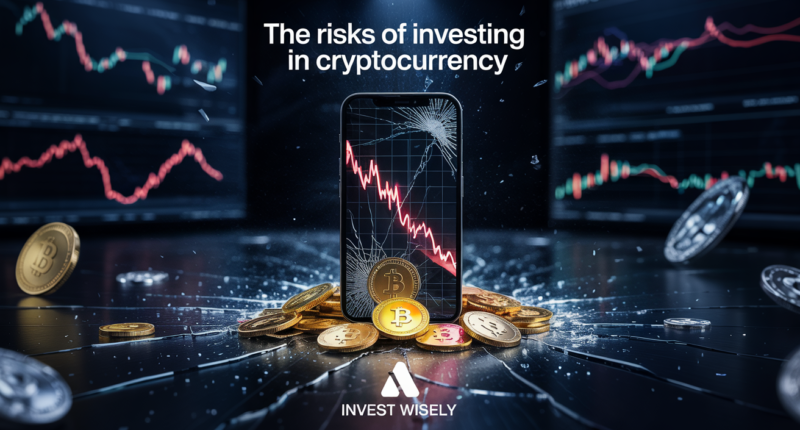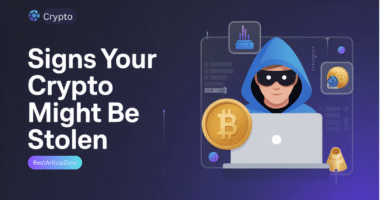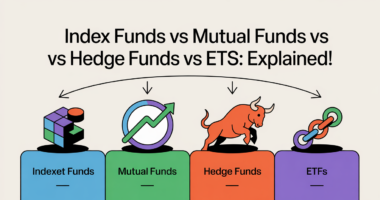Undoubtedly, cryptocurrency can offer big returns, but it also has big risks. For example, a leading brokerage warns that “Crypto is a new, highly volatile asset class,” meaning prices can swing wildly. Therefore, investors should understand key risk factors before diving in. These include extreme market volatility, unclear government rules, cybersecurity threats, a lack of insurance, and various scams.
- Market volatility: Indeed, crypto prices can jump or crash unpredictably, far more widely than most stocks. Volatility tends to be higher than in traditional marketsfinra.org, so investors might see large gains or sudden losses in a short time.
- Regulatory uncertainty: Government rules are still evolving and differ by country. New taxes or bans can be imposed with little warning, causing uncertainty.
- Cybersecurity threats: Moreover, exchanges, wallets, and private keys can be hacked or stolen. Platforms are “susceptible to cybersecurity threats and hacking”, and analysts report hackers stole about $2.5B of crypto in early 2025.
- Lack of insurance: Notably, crypto holdings have no FDIC, SIPC, or standard insurance. Thus, if an exchange fails or funds are stolen, there is usually no backup to recover them.
- Scams and fraud: Many coins and services are fake. For example, Fidelity notes some new coins “could be a higher scam risk”. Additionally, fraudsters use phishing and Ponzi schemes to steal money; U.S. authorities said crypto scams caused $5.7B in losses in 2024. Therefore, investors must remain very cautious.
Market Volatility
Furthermore, crypto markets are notoriously unstable. In fact, regulators note crypto assets are “risky and often extremely volatile,” with dramatic swings that can wipe out an investment. Moreover, hype and rumors can make prices rise or fall dramatically in a short time. As one analysis puts it, crypto has “proven to be extremely volatile,” showing rapid, unpredictable highs and lows. Consequently, investors may see fortunes built or erased in a matter of days.
Regulatory Uncertainty
Additionally, regulatory rules around crypto remain unsettled. For example, a financial firm observes that policies “are constantly evolving and may differ based on where you live”. As a result, a country can suddenly impose taxes, restrictions, or outright bans on crypto trading. Meanwhile, there is no single international rulebook: one nation’s crypto laws may differ drastically from another’s. Therefore, unclear or changing laws add risk and can lead to price swings.
Cybersecurity Threats

Furthermore, cybersecurity dangers are also very real. Indeed, regulators warn that crypto trading technology is “susceptible to cybersecurity threats and hacking, putting your funds… at risk”. For instance, one report found hackers stole over $2.47B of crypto in early 2025coindesk.com. Additionally, even user mistakes (like losing a password or wallet seed) can cause permanent loss. Therefore, strong security practices—such as hardware wallets and two-factor authentication—are essential.
Lack of Insurance
In addition, crypto often lacks traditional safety nets. For example, crypto holdings have no FDIC or SIPC protection, unlike bank deposits or stock accounts. Thus, if an exchange fails or a wallet is hacked, investors typically cannot recover their money. Past events like the Mt. Gox and FTX failures showed such losses fall entirely on users. Therefore, lost or stolen crypto usually means a permanent loss of investment.
Scams and Fraud
Moreover, many crypto ventures are scams. For example, Fidelity notes some new coins “could be a higher scam risk”. Additionally, fraudsters run fake ICOs, pump-and-dump schemes, and phishing to defraud investors. Indeed, official reports show crypto scams led to $5.7B in losses in 2024congress.gov. Therefore, investors should verify every project, ignore unrealistic offers, and be skeptical of high-return promises.
Conclusion
In summary, cryptocurrency investing carries significant risk. Overall, the combination of wild price swings, shifting regulations, cyber threats, no insurance, and rampant fraud means crypto suits only the most risk-tolerant investors. Furthermore, to reduce dangers, always do thorough research, diversify holdings, and use trusted platforms. Ultimately, be prepared for the worst – experts advise investing only what you can afford to losefidelity.com.









